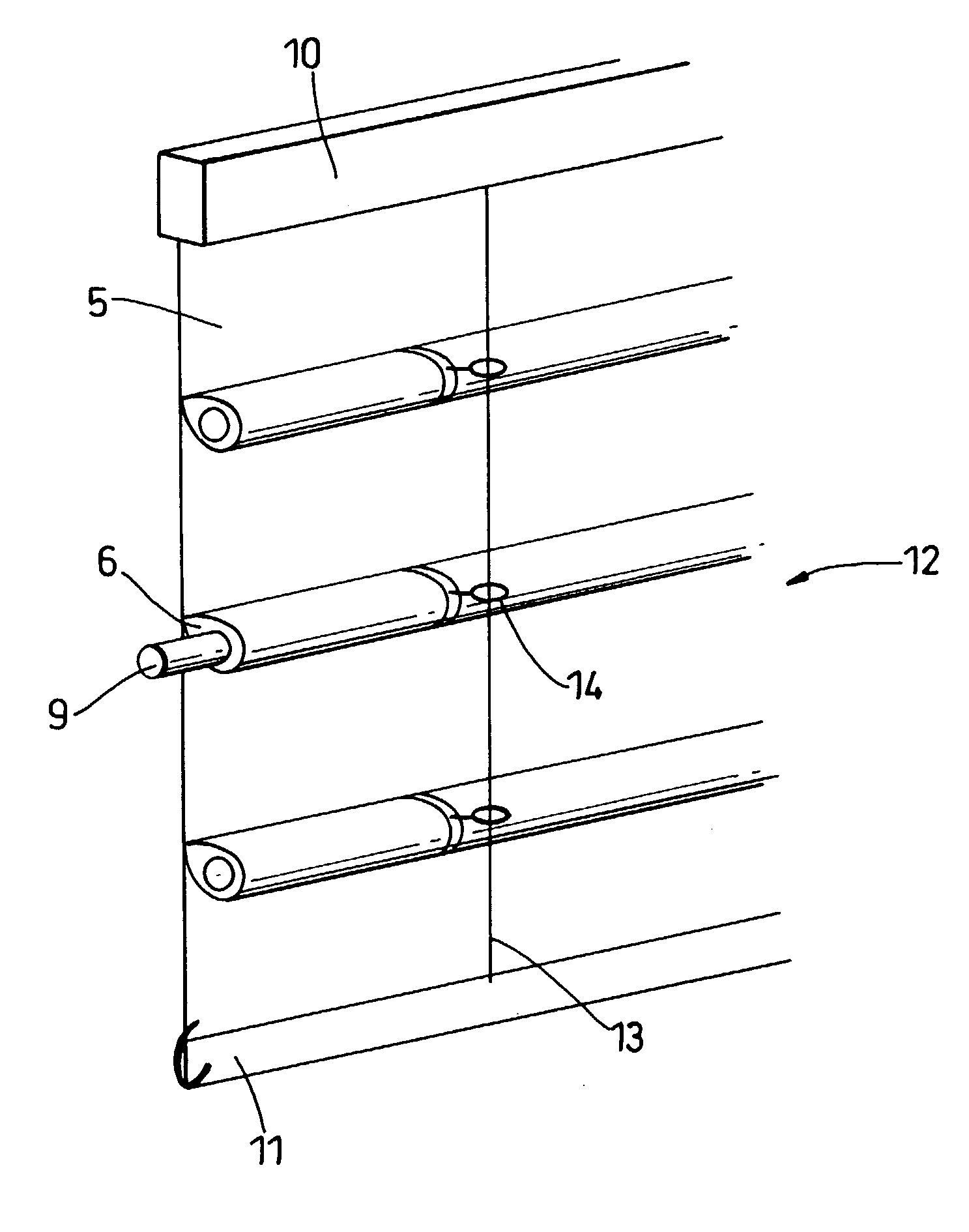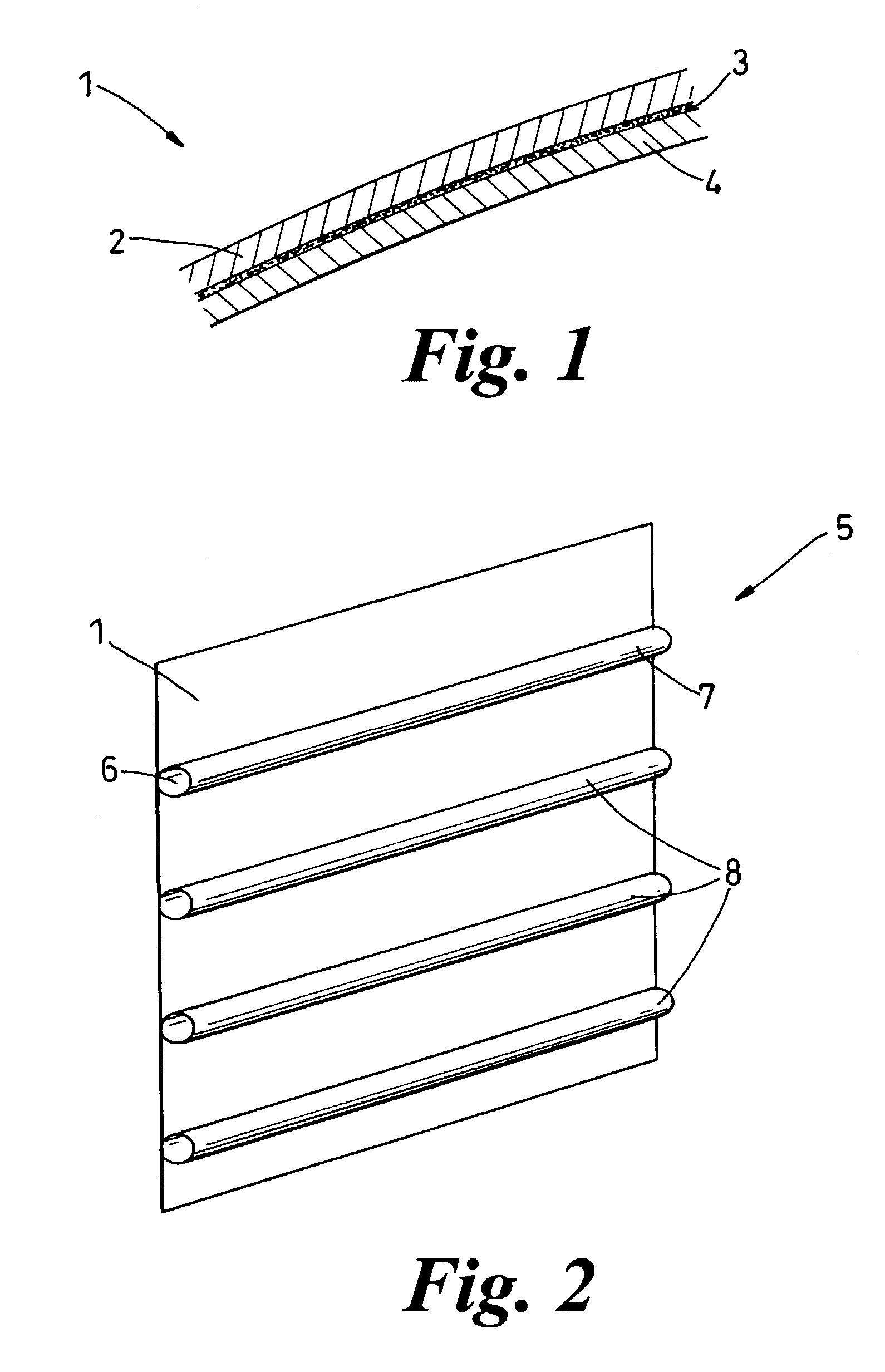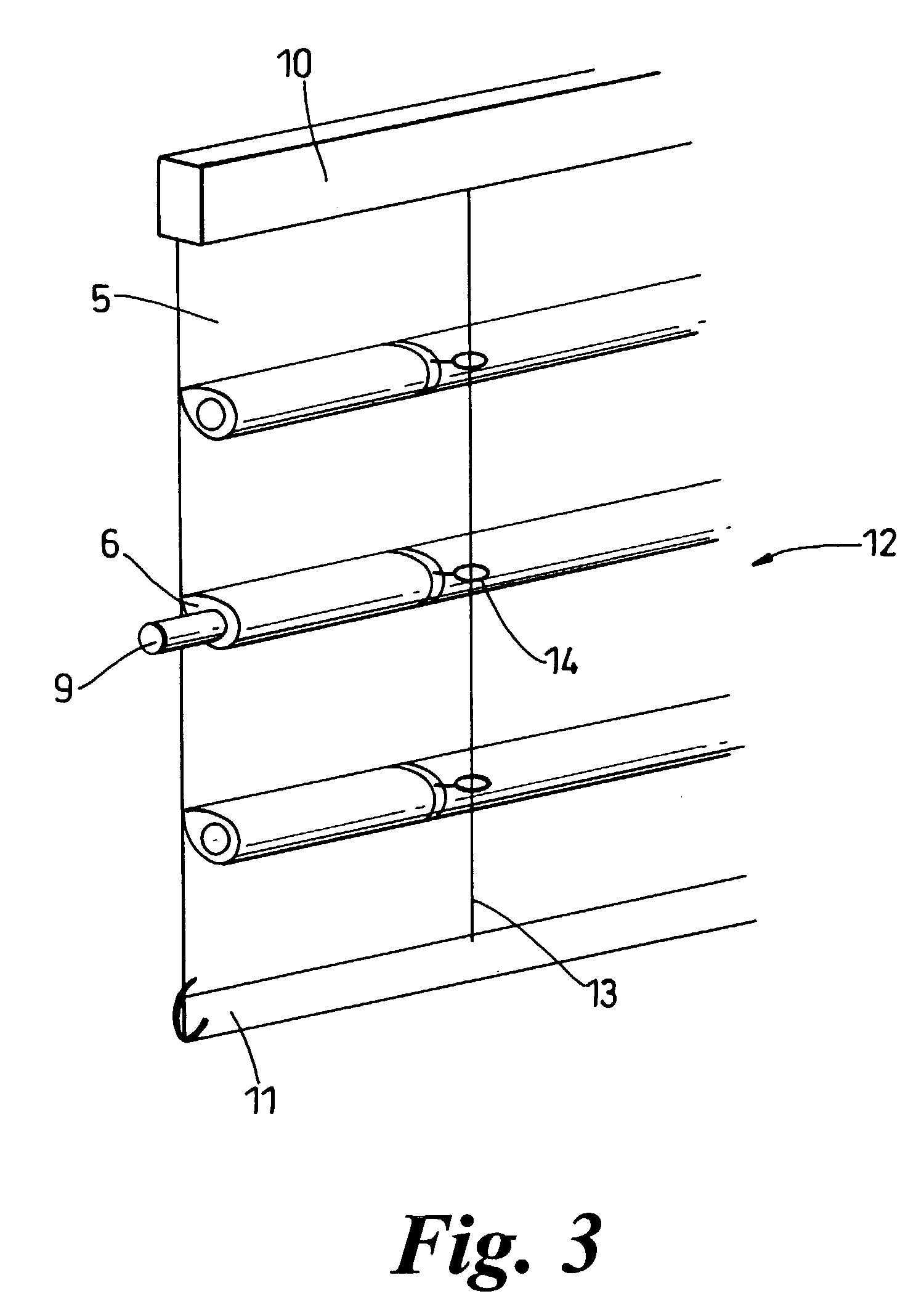Blind fabric
a technology for blinds and fabrics, applied in the field of blinds, can solve the problems of poor tactile properties, dull fabric that does not drape well, and stiffness
- Summary
- Abstract
- Description
- Claims
- Application Information
AI Technical Summary
Benefits of technology
Problems solved by technology
Method used
Image
Examples
Embodiment Construction
[0031]For the avoidance of doubt it should be noted that in this specification reference to ‘up’ and ‘down’, ‘width’, ‘height’, ‘upper’, ‘lower’, ‘vertical’, ‘horizontal’, ‘front’, ‘back’ and related terms refers to the orientation that the components of the blind adopt when installed for normal use, as they are shown in the figures.
[0032]FIG. 1 shows an enlarged portion of a laminated fabric 1, according to the first aspect of the present invention. The fabric 1 comprises three layers. A first layer of a woven face fabric 2, which is bound using a thin layer of hot melt adhesive 3 to a base fabric 4. The woven face fabric 2 of the present example is a woven 100% polyester Jacquard fabric of weight 130 gsm and the base fabric 4 is a spun lace of weight 40 gsm. The adhesive layer 3 comprises a polyolefin adhesive, such as “Xiro Polyolefin 30 micron” (trade mark, ex Sarna) or “Polyolefin 30 micron” (trade mark ex Faitplast).
[0033]The three layers are laminated together using a convent...
PUM
| Property | Measurement | Unit |
|---|---|---|
| thickness | aaaaa | aaaaa |
| thickness | aaaaa | aaaaa |
| pressure | aaaaa | aaaaa |
Abstract
Description
Claims
Application Information
 Login to View More
Login to View More - R&D
- Intellectual Property
- Life Sciences
- Materials
- Tech Scout
- Unparalleled Data Quality
- Higher Quality Content
- 60% Fewer Hallucinations
Browse by: Latest US Patents, China's latest patents, Technical Efficacy Thesaurus, Application Domain, Technology Topic, Popular Technical Reports.
© 2025 PatSnap. All rights reserved.Legal|Privacy policy|Modern Slavery Act Transparency Statement|Sitemap|About US| Contact US: help@patsnap.com



